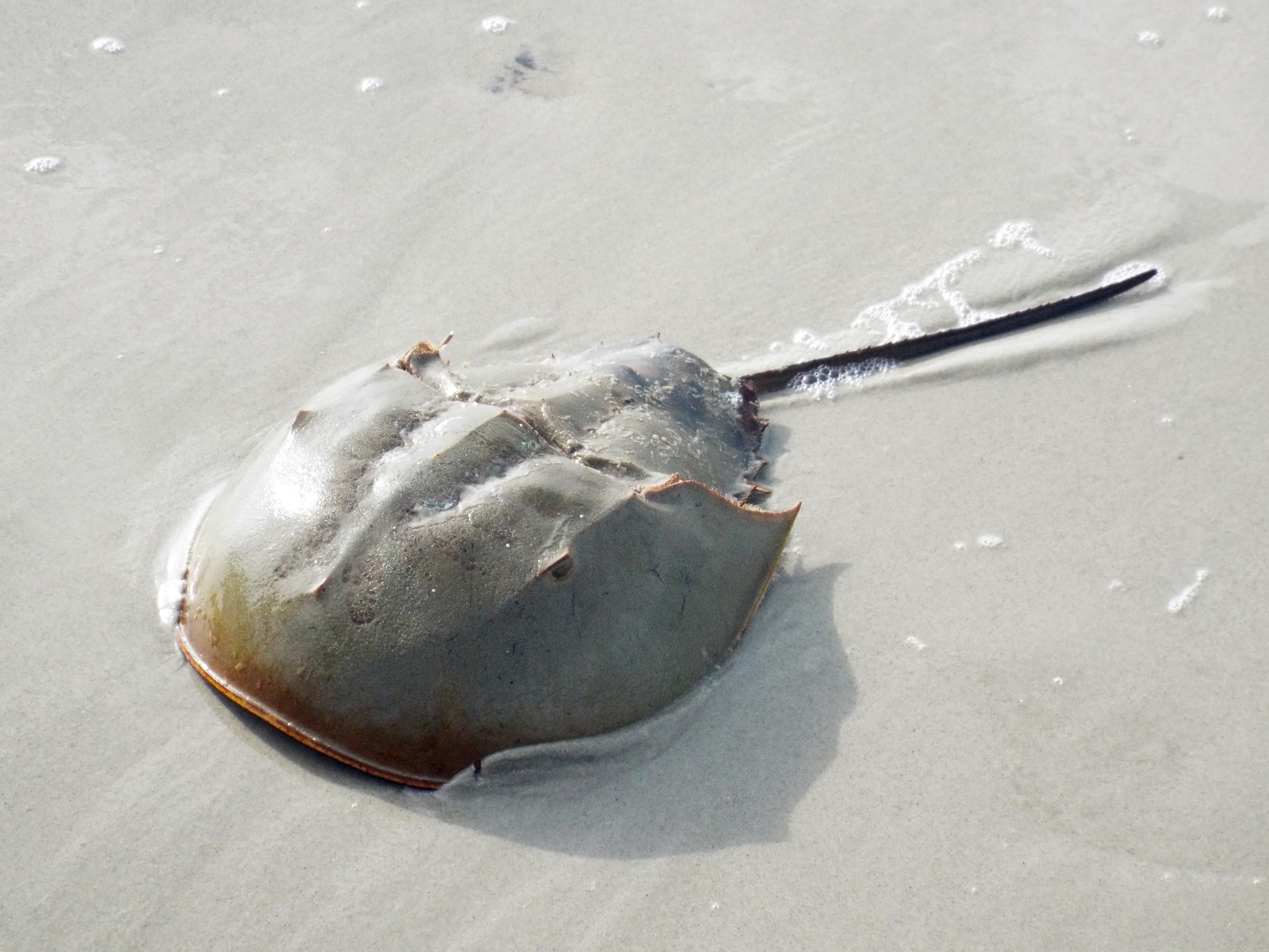


This week we’re looking at an oddball arthropod whose secretions are vital to modern medicine as well as shorebird conservation. This week we’re examining the Atlantic Horseshoe Crab (Limulus polyphemus).
Horseshoe Crabs are undeniably weird and interesting. They are living fossils that belong to the oldest surviving arthropod order, Xiphosura. They are more closely related to Scorpions and Spiders than Crabs and other Crustaceans. Their body is covered in a thick carapace that’s divided into 3 parts: the head, the abdomen, and the telson. In arthropods, the telson is simply the last segment of the body. In Horseshoe Crabs, the telson has developed into a long, tail-like spine on the back of the abdomen. Although it looks quite formidable, this telson is not used for defense. It’s merely used by the Horseshoe Crab as a rudder and to flip itself over on land. Horseshoe Crabs have 9 eyes in total, two large compound eyes on top and 7 simple eyes around the body. They also have the ability to regenerate lost limbs.
Horseshoe Crabs spend their days feeding on mollusks, invertebrates, and detritus on the sea floor of the continental shelf. Come summer and warmer waters, Horseshoe Crabs flood the beaches of the East Coast to spawn. The smaller males attach themselves to the abdomen of the female with a specialized claw and can remain like this for days or even weeks before spawning. Horseshoe Crabs produce a huge volume of eggs every year and the species breeds all up and down the east coast. Each female lays several thousand eggs before returning to the sea. This seaside bounty of arthropod eggs is a critical food source for migrating shorebirds, especially the Red Knot. The eggs that survive this shorebird buffet hatch a few weeks later as free swimming larvae. Like other arthropods, Horseshoe Crabs molt as they grow and you can often find the molted exoskeletons of young Horseshoe Crabs along the beach. It typically takes a Horseshoe Crab 10 years to reach adulthood and they can live to be almost 20 years old.
Horseshoe Crabs are also unique for having blue blood. Horseshoe Crabs, along with many Mollusks and Crustaceans, use Hemocyanin in their blood instead of Hemoglobin. Hemocyanin contains copper and is thus blue when oxygenated. The hemoglobin in our blood contains iron, which turns red when oxygenated. Horseshoe Crab blood is of great medical importance. This blue goo contains a chemical called Limulus amebocyte lysate, or LAL for short. This chemical coagulates when exposed to blood or cerebrospinal fluid that contains Gram-Negative Bacteria. In other words, it can be used to test both human and animal patients for bacterial infections. Because of the importance of their blood in the modern medicine, horseshoe crabs are collected from the wild each year and bled to extract this chemical. The Horseshoe Crabs are not killed by this process and are returned to the wild shortly after bleeding. Research indicates that they are able to totally regenerate this lost blood in 2 to 3 months.